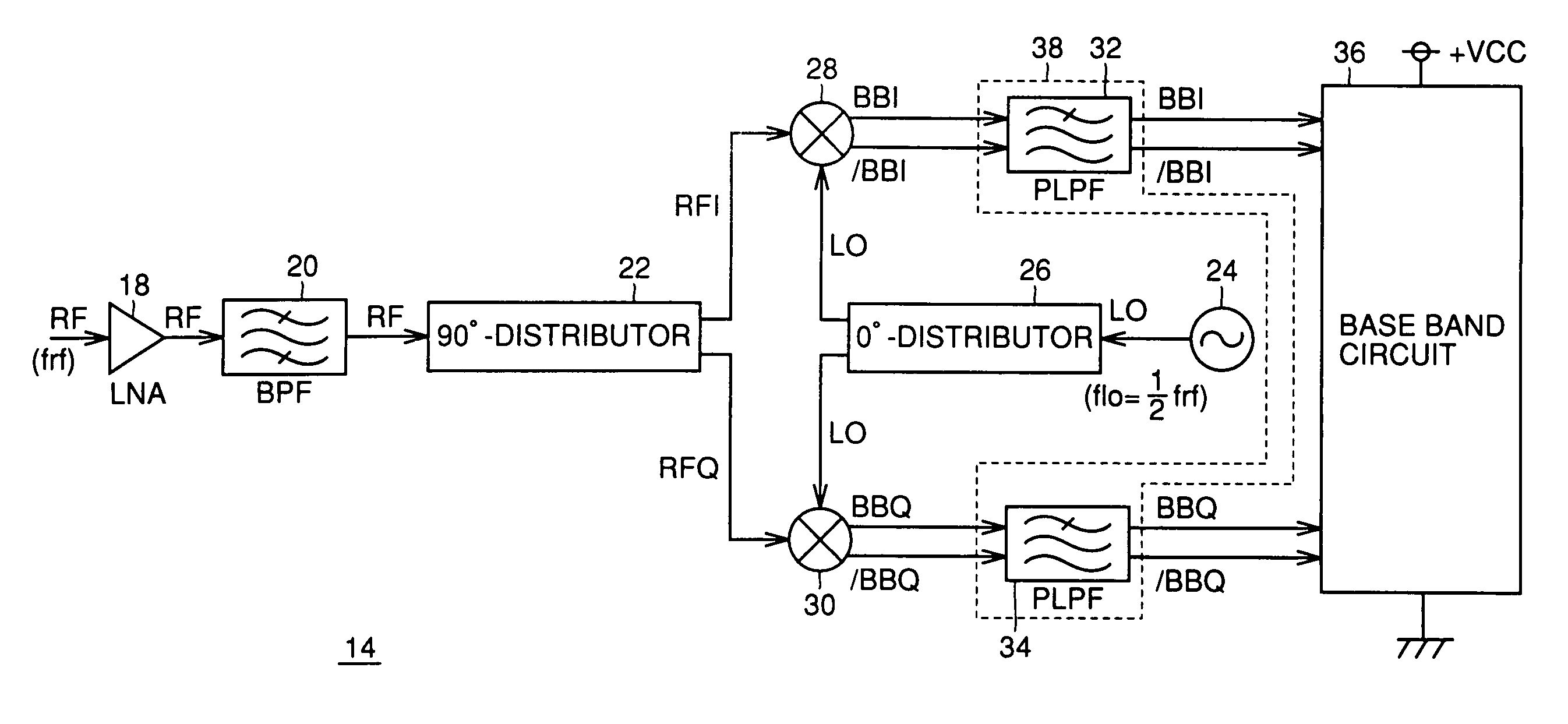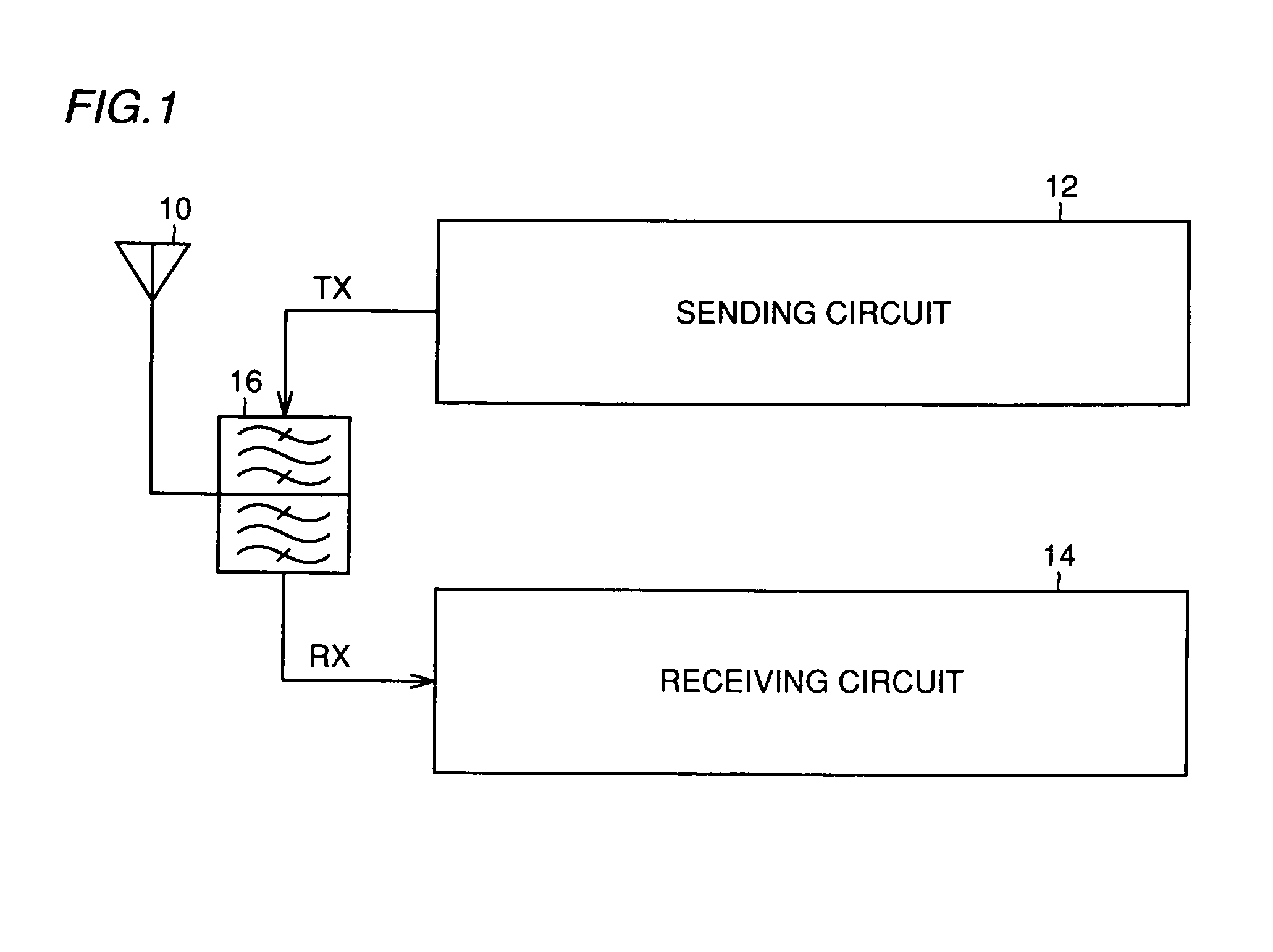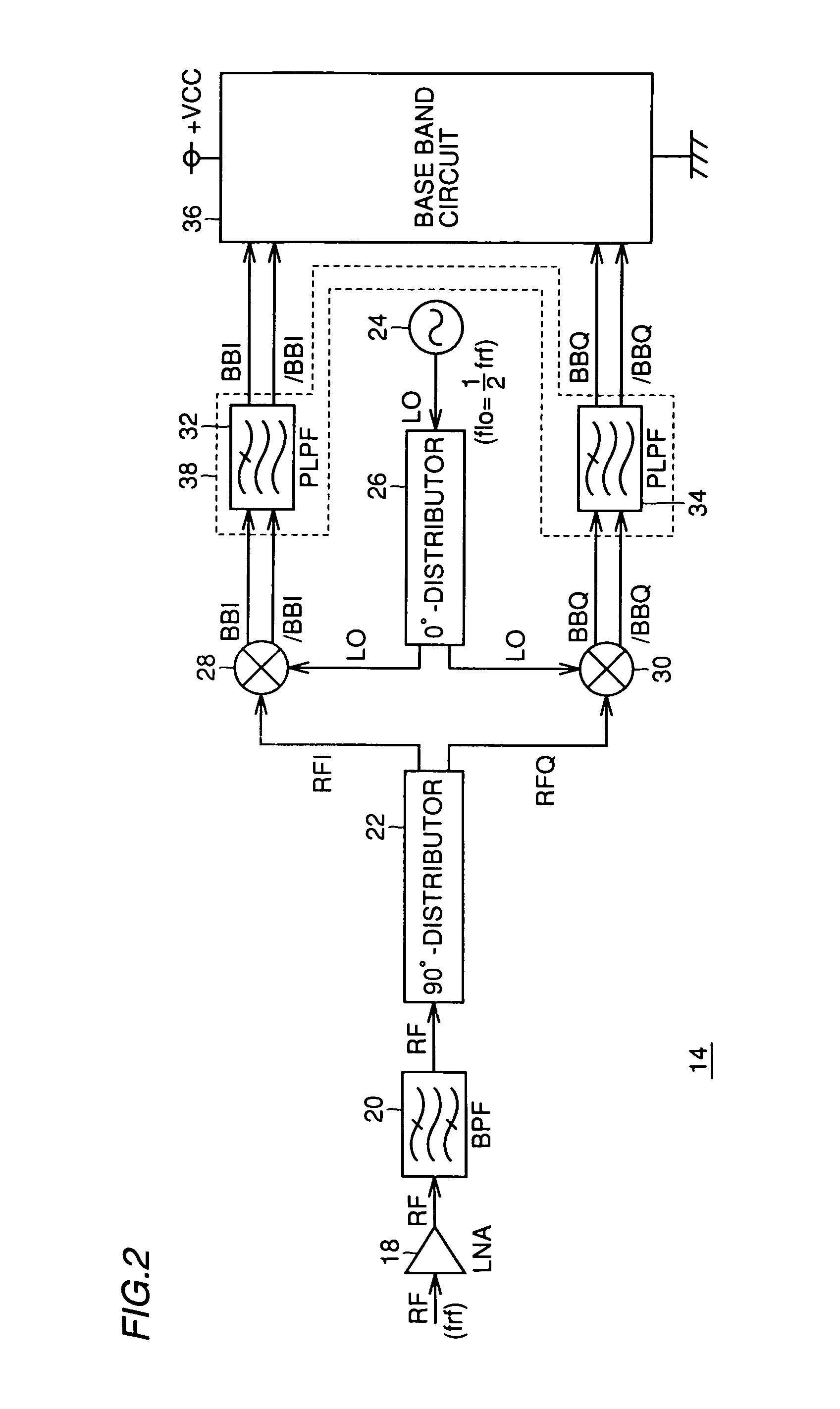Wireless terminal device
a terminal device and wireless technology, applied in the direction of demodulation, electrical equipment, radio transmission, etc., can solve the problem of not specifically disclosed low-pass filter technology, and achieve the effect of effectively eliminating
- Summary
- Abstract
- Description
- Claims
- Application Information
AI Technical Summary
Benefits of technology
Problems solved by technology
Method used
Image
Examples
first embodiment
[0044]Referring to FIG. 1, a cellular telephone which is a kind of wireless terminal device includes an antenna 10, a transmitting (sending) circuit 12, a receiving circuit 14 and a transmission / reception branching filter 16.
[0045]This cellular telephone employs a CDMA (Code Division Multiple Access) scheme, and simultaneously performs transmission and reception via single antenna 10. Therefore, the transmitting frequency is different from the receiving frequency and, in this embodiment, is lower than the receiving frequency. Therefore, the transmission / reception branching filter 16 is formed of a band-pass filter passing only a transmitting wave TX therethrough and a band-pass filter passing only a received wave RX therethrough, and hardly passes transmitting wave TX toward receiving circuit 14.
[0046]Referring to FIG. 2, receiving circuit 14 includes a low-noise amplifier (LNA) 18, a band-pass filter (BPF) 20, a 90′-distributor 22, a local oscillator 24, an in-phase 0° distributor ...
second embodiment
Modification of Second Embodiment
[0099]A modification of the second embodiment will now be described in connection with another example of passive low-pass filter PLPF2. As already described, the inductance in passive low-pass filter PLPF2 shown in the second embodiment can have a small inductance value. Therefore, resistance elements may be used instead of the inductances for forming passive low-pass filter PLPF2.
[0100]Referring to FIG. 17, passive low-pass filter PLPF2 according to the modification of the second embodiment includes two resistance elements 425 and 426, and capacitor 423. Resistance element 425 is employed in place of inductor 421 shown in FIG. 13 for passing base band signal BBI (BBQ) sent from passive low-pass filter PLPF1 and transmitting it to base band circuit 36. Likewise, resistance element 426 is employed in place of inductor 422 shown in FIG. 13 for passing base band signal / BBI ( / BBQ) sent from passive low-pass filter PLPF1 and transmitting it to base band...
PUM
 Login to View More
Login to View More Abstract
Description
Claims
Application Information
 Login to View More
Login to View More - R&D
- Intellectual Property
- Life Sciences
- Materials
- Tech Scout
- Unparalleled Data Quality
- Higher Quality Content
- 60% Fewer Hallucinations
Browse by: Latest US Patents, China's latest patents, Technical Efficacy Thesaurus, Application Domain, Technology Topic, Popular Technical Reports.
© 2025 PatSnap. All rights reserved.Legal|Privacy policy|Modern Slavery Act Transparency Statement|Sitemap|About US| Contact US: help@patsnap.com



